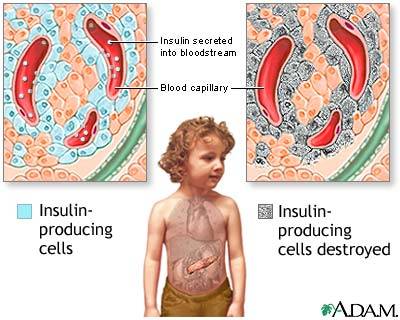Playing The Blame Game Or Choosing To Live With Diabetes: You’ve just received news that has rocked your world. You have diabetes. You want to rail against the idea, deny the awful truth and you are ready to affix blame wherever you can.
Maybe it was the extra fruit smoothie you had last month or a cup of gourmet coffee with a name that’s longer than most medical terms. You mind ventures to the steak medallions you had at the steak house or the candy you like as a snack. Were these responsible for your condition?
Sure you blame yourself, but there’s plenty of blame to go around. Maybe you were genetically predisposed to diabetes. Was it your mother’s fault – perhaps your dad’s?
Were there environmental factors that contributed to your condition? Were there marketing practices that led you to an unhealthy lifestyle?
Why did diabetes have to strike? Why did it strike you? Why did it strike now?
Whenever bad things happen we respond with a sense of grief to the news. The Grief Recovery Institute provides a new list of grief stages. These events seem to follow sequentially and have a particularly strong bearing on the loss of a loved one, but may be applicable to other issues. These stages tend to be Shock and Denial, Volatile Reactions, Disorganization and Despair, and Reorganization.
When applied to diabetes we find there can be strong evidence of shock and denial with regards to the existence of diabetes. This event can lead to volatile reactions that are an expression of the anger you feel over the injustice of the disease. Disorganization and despair can often follow, as there are new things to learn that can help, but you have no emotional energy to get on track. Eventually this tends to lead to a reorganization of your priorities, eating habits and plans for physical activity.
Some patients can stay in the shock and denial or volatile reaction phase for a long time. This is the arena where blame is typical. When patients remain in this place it can be hard to consider the possibility of a productive future.
When a diabetic can move to the place where they refuse to heap blame on themselves or others they are finally free enough to begin looking at the possibilities associated with improving their quality of life.
By accepting where you’re at and then enacting a plan that can improve life you have the capability of embracing a future instead of living perpetually in the past.
Diabetes can be managed, but it needs your cooperation. Without your willingness to involve yourself in the process you are delaying results and allowing negative effects to continue to mount within your body.
Giving up is not only pessimistic it is also potentially damaging to your future.
If knowledge is power then finding out more about your condition and how to treat it provides a strong incentive to live and pursue life.
When you finally get to the reorganization phase of grief recovery you may feel as if the world around you has crumbled and you’re left to sort the remaining pieces. That’s not a bad picture of the way this phase works. This phase does allow you to take only the pieces you need for recovery and discard things like preconceived ideas and old habits. It also allows you to trade in many good habits for even better habits. It can help you locate those individuals most capable of helping you in your effort to reorganize. In the end others may discover a brand new you.
Yes, there is life after a diabetes diagnosis. Are you ready to live it?
 Diabetes And Smoking: Despite the well documented dangers of smoking, an estimated 45 million people in the United States still smoke regularly – around 15% of the population. For an otherwise healthy person, cigarettes are unhealthy enough; for a person who suffers from diabetes, they can be even more detrimental to health. And even if you don’t smoke, exposure to so-called second hand smoke is almost as unhealthy.
Diabetes And Smoking: Despite the well documented dangers of smoking, an estimated 45 million people in the United States still smoke regularly – around 15% of the population. For an otherwise healthy person, cigarettes are unhealthy enough; for a person who suffers from diabetes, they can be even more detrimental to health. And even if you don’t smoke, exposure to so-called second hand smoke is almost as unhealthy. Diabetes
Diabetes 